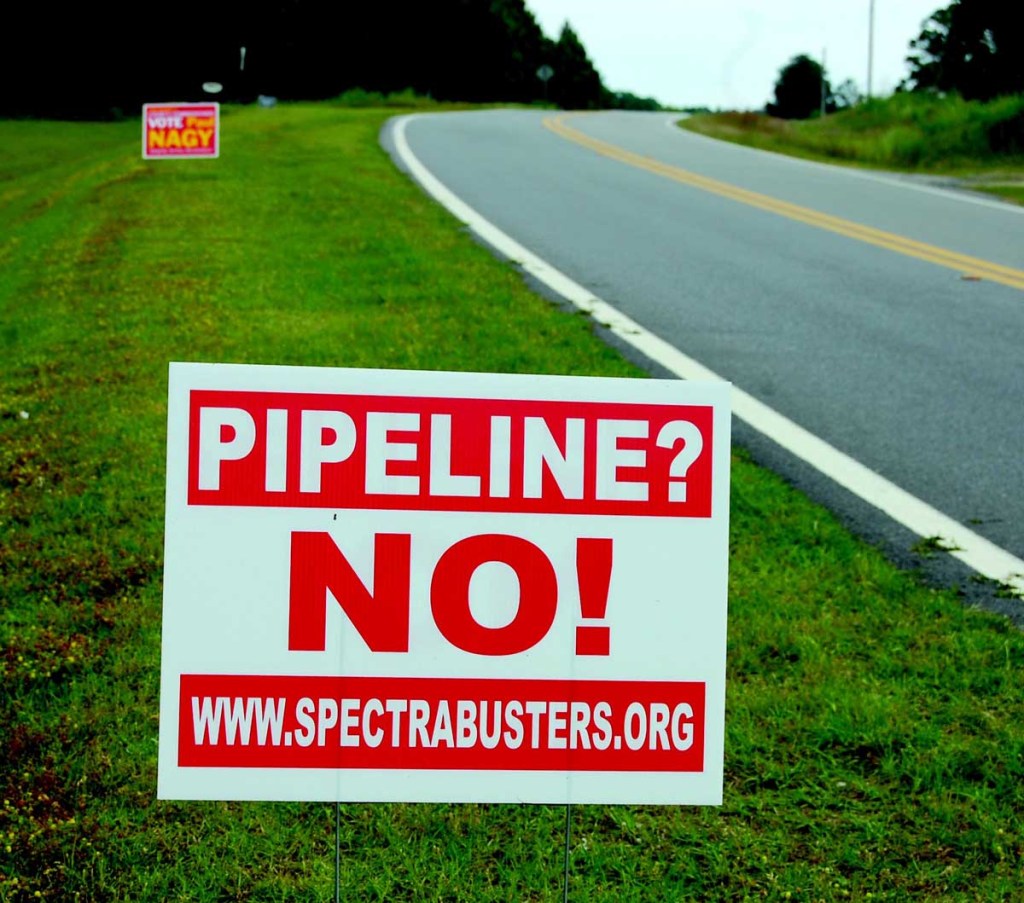EPA letter lists concerns with Sabal Trail
Published 10:49 pm Saturday, April 26, 2014

- A sign on Dunn Road expresses one resident's feelings about a proposed natural gas pipeline in this file photo from August 2014. An alternate route for the Sabal Trail pipeline, if it ultimately is approved, would pass through the entirety of Colquitt County.
The U.S. Environmental Protection Agency this week questioned the proposed route of a natural gas pipeline that could traverse Colquitt County, expressed environmental concerns and asked for an examination of whether more electrical generation is needed.
In a comment letter dated on Monday, the agency raised questions about potential threats to water, land, air and wildlife. The letter was entered as part of the Federal Energy Regulation Commission’s scoping period during which comments can be entered into the public record.
That official comment period ended on Monday.
The commission is ultimately responsible for deciding the route of gas pipelines.
Since spring of 2013, Sabal Trail, a joint venture of Spectra Energy Corp. and NextEra Energy Inc., has been examining paths for a 465-mile, pipeline it wants to build; one of those paths would take it through the heart of Colquitt County. The proposed 36-inch pipeline for Florida Power and Light Co. would stretch from Tallapoosa County, Ala., to Osceola County, Fla., near Orlando.
One issue raised by EPA is whether laying a new, 36-inch pipeline in proximity to a 10-inch pipeline built in the 1950s would present a danger to the public.
The alternate route that would take the pipeline through the heart of Colquitt County would for some of its path run parallel to the old iron pipeline.
“Consequently, concerns exist with the safety of adding a 36-inch natural-gas line in its (right-of-way), particularly in dense population centers,” the agency’s letter said. “Moreover, should these dense population centers have more than one natural-gas line in their neighborhoods, safety concerns are heightened. “
The letter also discussed environmentally sensitive waterways in the area through which that route would run. The Flint River, for example, is one of a number of waterways underneath which the pipeline would run. The Ochlockonee River Basin, Radium Springs in Albany, the Chickasawhatchee Swamp and longleaf pine populations are among other sensitive habitats mentioned.
“EPA requests the proposed action avoid high functioning, high quality, and rare systems,” it said. “The (environmental impact study) should identify any wetlands identified as being of particular sensitivity (e.g., identified by the state as of particular value, presence of the ESA species). For example, Limesink wetlands are a common aquatic habitat in Southwest Georgia” that are an important wildlife habitat.
Prior to the EPA report, Colquitt County officials last month alerted the company to concerns about how the project could impact agriculture. Colquitt County Commission has requested that any pipeline be buried with a minimum of five feet of top cover “when traversing agricultural properties to include pasture land, cultivated land, surface drains, diversions, waterways, open ditches and streams.”
The project also has sparked criticism in communities along the proposed route.
In an email response, Spectra said it will address the EPA’s concerns in its environmental impact statement, which is expected to be prepared by spring 2015.
“The extent and nature of their comments were what we’d expect for a project of this size covering three states,” the statement said. “Sabal Trail has met with and discussed the project with EPA on several occasions, so we are fully aware of their concerns and have been working to address them even before the comments were filed.”
EPA also recommended that Florida Power & Light, the end user, consider alternative methods of serving customers. These include conservation, alternative energy sources and importing liquefied natural gas from Mississippi.
Electricity sales apparently peaked in 2007, the agency’s letter said. Energy efficiency has improved with increased use of more stingy light bulbs and appliances and more energy efficient buildings.





